|
Map displaying the ground track of the solar eclipse of May 30, 1984. Unfortunately the Eastern Carolinas were covered by thick clouds and did not experience clear views. |
As we eagerly await the August 21, 2017 total solar eclipse, let's look back at the last time the Carolinas had a major solar eclipse: May 30, 1984.
Occurring from late morning until early afternoon, most of the southeastern United States was treated to an amazing view as the sun almost completely disappeared behind the moon. The moon's blockage of the sun reached 99.8% totality at its maximum extent. No point on the Earth's surface experienced a total eclipse; this is known as an annular eclipse. The best views of this eclipse were in a stripe extending from New Orleans, LA across Montgomery, AL; Atlanta, GA; Greenville, SC; Lake Norman, NC; to Greensboro, NC. According to newspaper reports from the time, the rare "diamond necklace" effect was noticed as dots of sunlight appeared to shine through valleys on the moon's surface. Birds were reported to have been fooled by the disappearance of the sun and began settling down for their night's sleep as darkness fell.
Unfortunately, the Eastern Carolinas, including Florence, Myrtle Beach, Wilmington and New Bern, were covered beneath thick clouds with rain and missed seeing this eclipse. Skies across the area didn't clear out until early the following morning.
Other notable solar eclipses occurred on July 20, 1963; March 7, 1970; and May 10, 1994.
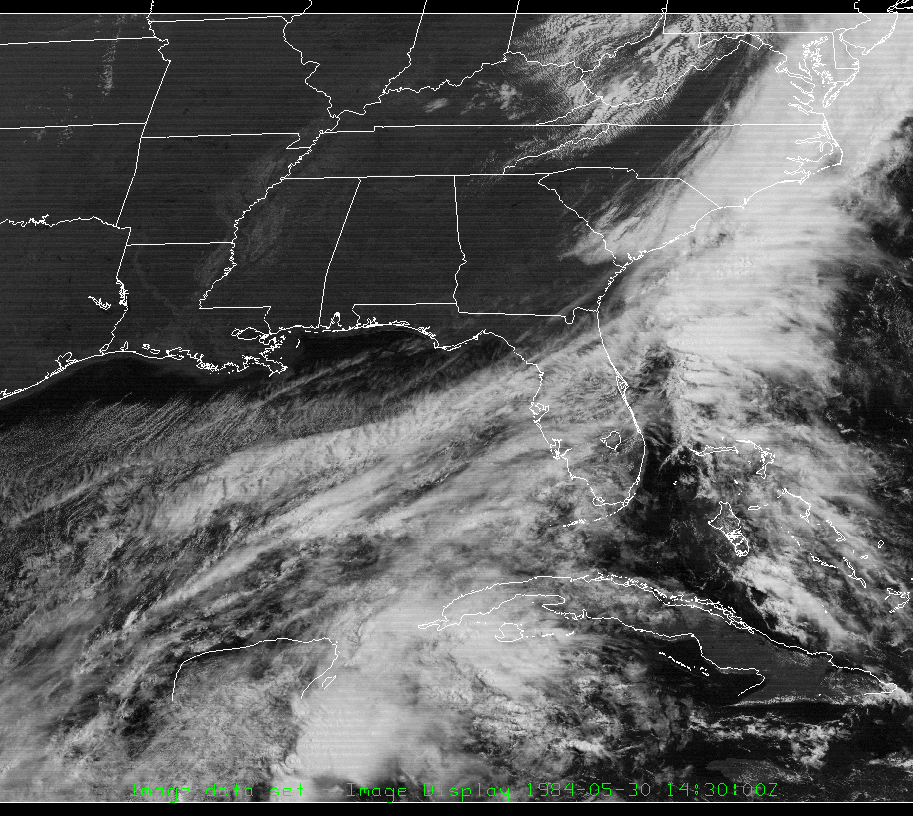
GOES-5 visible satellite loop from May 30, 1984 showing the eclipse shadow passing rapidly across the Southeastern United States.
This eclipse occurred around noon and therefore blocked out the sun during a time when the Earth receives its strongest solar heating. Examining historic weather records from May 30, 1984 reveals an interesting shape to hourly temperature curves due to sunlight blocked by the eclipse.
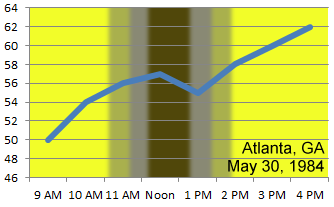 |
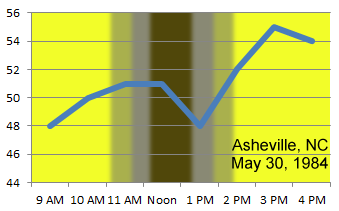 |
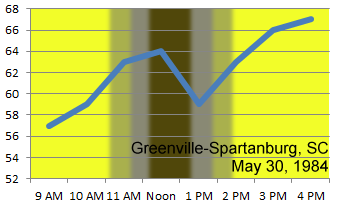 |
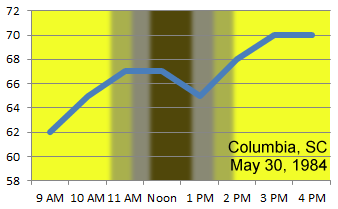 |
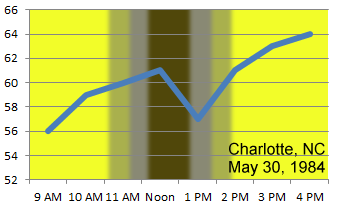 |
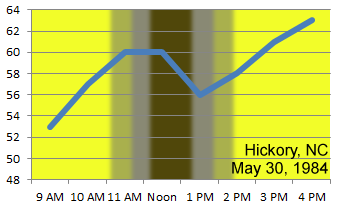 |
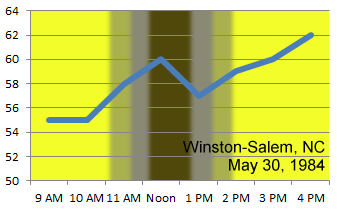 |
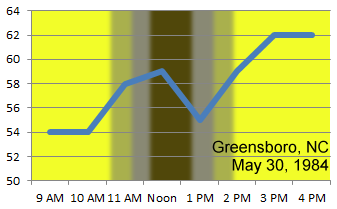 |
Additional Reading:
Millions in the South Treated to Rare View of Solar Eclipse, New York Times
Annular Solar Eclipse of May 30, 1984, NASA
Research & Page Author: Tim Armstrong
Page Created: June 29, 2017
Last Updated: June 29, 2017